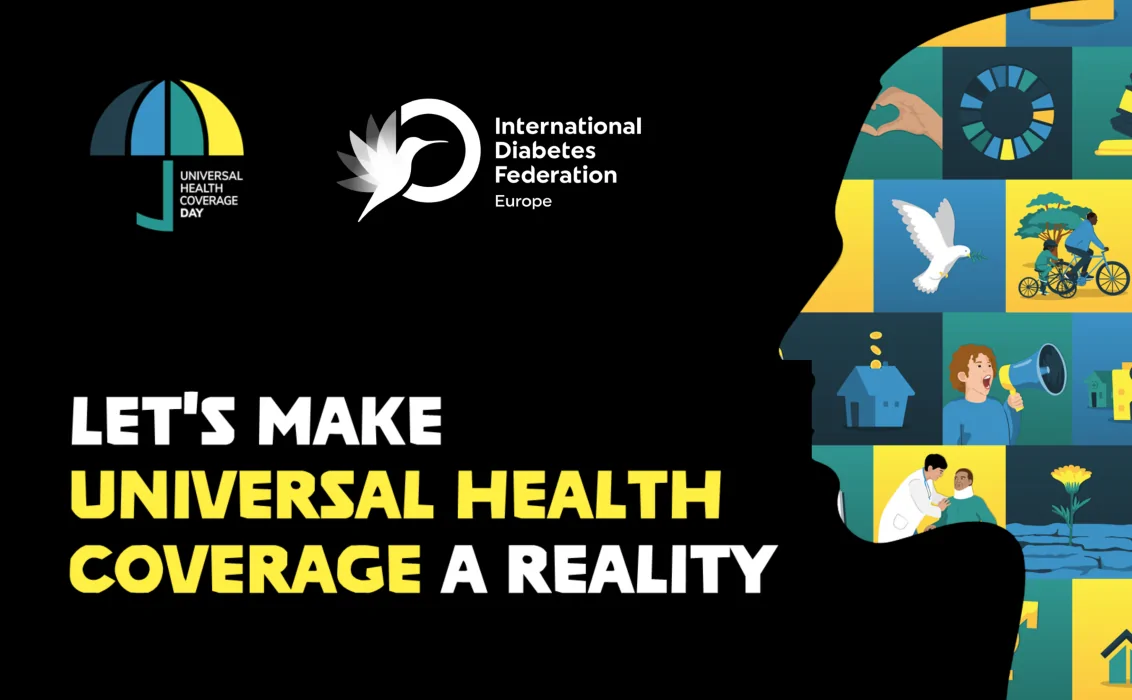Looking at challenges eyes to eyes
World Sight Day 2017 12 October 2017
In Europe, over 15 million people are living with type 2 diabetes without being aware of their condition. Delayed diagnosis means they may already be suffering from at least one complication by the time they are diagnosed with diabetes. Similarly, people with known but uncontrolled diabetes are likely to develop complications sooner than people with controlled diabetes. Among the debilitating complications of diabetes, diabetic retinopathy is still one of the most feared, dramatic yet common ones. Currently, diabetic retinopathy is one of the leading causes of preventable blindness in working age adults, even in developed countries.
On World Sight Day, we spoke to Professor Sehnaz Karadeniz, International Diabetes Federation (IDF) Europe Regional Chair, teaching Faculty at the Ophthalmology Department of Medical Faculty of Istanbul Science University and also working as an ophthalmologist at the Ophthalmology Dept. of the Istanbul Florence Nightingale Hospital. Sehnaz has type 2 diabetes.
Outside of your voluntary commitment within IDF Europe, you are an ophthalmologist and you also teach in that field. Can you tell us more on the relation between diabetes and retinopathy ?
As an ophthalmologist we should always keep in mind that we are not dealing with an eye disease only, but with an end organ response to a systemic disease. Consistently high levels of blood glucose, together with high blood pressure and high cholesterol, are the main causes of retinopathy. Therefore, glucose control and control of other risk factors like hypertension and dyslipidaemia are also a crucial part of the eye care in people with diabetes.
As the number of people with diabetes increases in Europe and beyond, so are the number of people at risk for diabetic retinopathy. The prevalence of diabetic retinopathy increases with the duration of diabetes. Over 70% of people who have been living with diabetes for more than 20 years have some form of diabetic retinopathy. As an overall number it is estimated that at least one third of people with diabetes have diabetic retinopathy. And as you can read here a story written by Rachel Portelli, retinopathy can become a major handicap.
With 60 million people with diabetes and 32 million more at risk, diabetic retinopathy is a major health issue in the continent.
This is alarming and mostly unknown. What can be done?
You know, in most cases of debilitating complications linked to diabetes can be prevented and I am a great supporter of prevention and awareness strategies which are easy and cost-effective tools. We, as a federation and as a diabetes community, need to enlarge as much as possible the scope of these strategies. We also need to improve and adapt our communication to match the reality. For example, in the literature, diabetes is often mentioned as one of the leading causes of blindness. It is a reality but this is not a motivating wording and it is reductive. In fact, there is a long way from the early stages of diabetic retinopathy to the stage of blindness. So our messages should not only refer to the end-stage but also to earlier stages of the visual impairment which also negatively affects the quality of life of people with diabetes. We also need to emphasize our communication around the fact that these debilitating complications can easily be prevented by early diagnosis, regular follow-up and timely management.
If I understand correctly, prevention is key. What should be done at the healthcare and institutional levels?
You are right and it should be at the center of every strategy. One of the main problem is that a considerable number of people diabetic retinopathy are diagnosed late when they already have some, even major visual loss. They generally have no visual complaints in the early stages of diabetic retinopathy, and, some even till late stages, therefore people may not be aware that they have retinopathy until visual impairment affects their daily life.
Screening for retinopathy even in asymptomatic persons with diabetes is therefore crucial. Early diagnosis, regular follow-up and timely treatment of sight-threatening disease are the only ways for saving sight in people with diabetes. And prevention is not only a question of treatment. Good blood glucose control, control of other risks factors are among the strategies to delay and slow down the arrival and the progression of diabetic retinopathy.
Eye care in people with diabetes needs a well-coordinated and integrate approach, so the role of the healthcare system is extremely important. Early diagnosis and timely treatment of this sight-threatening disease can only be achieved by better coordination between health disciplines and better integration of care systems for people with diabetes. Besides further research on diabetic retinopathy, we should now more and more focus on translating the existent evidence base into the real life of people with diabetes.
To this end, in 2015 the International Diabetes Federation together with the Fred Hollows Foundation produced the guide “Diabetes Eye Health: A guide for health professionals” , to reinforce the knowledge of health professionals working with people with diabetes. In 2016 we also produced in collaboration with the International Federation on Ageing and the International Agency for the Prevention of Blindness a very interesting publication “The Diabetic Retinopathy Barometer Report: Global Findings” which contain extremely interesting recommendation to optimise the outcomes for adults leaving with diabetes who are at risk of developing eye complications. I really encourage everyone involved in the management of diabetes to download it and read it. It is available here.
At IDF Europe we are now also working on a publication looking into the challenges and barriers in integrating the evidence base into practice which should be released on time for World Diabetes Day. I hope this will also serve as a strong advocacy tool to bring these challenges and barriers to the attention of the decision-makers and will serve to constructive discussions to bridge the gaps.
You know, as Chair of IDF Europe, representing 70 national diabetes associations in 47 countries, I can observe, on a daily basis, the disparities in access to treatment around Europe. And for me this is one of our main missions: to improve the availability and accessibility of screening and treatment options for everyone with diabetes in the Continent. In this respect, healthcare system needs to be adapted to become “chronic disease-friendly” with the person at the center of the care system. We were speaking about communication strategies earlier, and this is for me a major one. It may only be semantic but it is central in the way our healthcare system should be re-oriented. People with diabetes are persons before being patients and must be considered as such.



